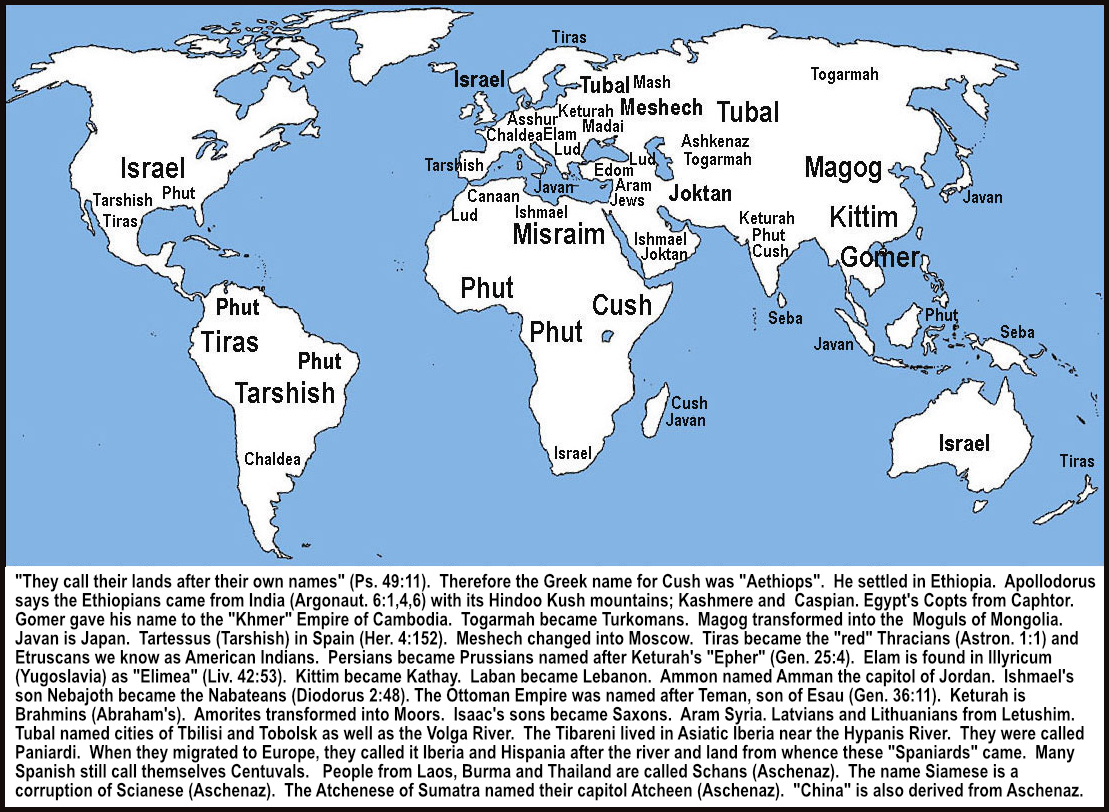
The Amazing HISTORY of the World's RACES -- Japheth's Children
(part two)
![]() here
did Noah's grandsons migrate (Gen.10)? What did they look like? Who are
they today? Did Japheth marry an Oriental? Was the oriental population predicted to "INCREASE"? Is GOMER Cambodia? Is ASHKENAZ the Ukraine? Is RIPHATH in Southeast Asia? Is TOGARMAH Turkistan? Is MAGOG China and Mongolia? Is MADAI the Ukraine? Is JAVAN Japan? Is KITTIM Cathay? Is TUBAL Siberia? Is MESHECH Russia? Is TIRAS the Red Indian?
here
did Noah's grandsons migrate (Gen.10)? What did they look like? Who are
they today? Did Japheth marry an Oriental? Was the oriental population predicted to "INCREASE"? Is GOMER Cambodia? Is ASHKENAZ the Ukraine? Is RIPHATH in Southeast Asia? Is TOGARMAH Turkistan? Is MAGOG China and Mongolia? Is MADAI the Ukraine? Is JAVAN Japan? Is KITTIM Cathay? Is TUBAL Siberia? Is MESHECH Russia? Is TIRAS the Red Indian?
Japheth Is The Oriental Branch!
The name "JAPHETH" literally means "to enlarge or expand" in Hebrew. Genesis 9:27 states that "God shall enlarge Japheth." Which of the three races has the largest population today? According to volume 14 of the 1974 edition of Encyclopedia Britannica, "The MONGOLOID peoples, not including the American Indians, account for over 71 percent of the world's population of 3,500,000,000" (p.845). The Bible interprets itself because we read about a 200-million-man army (Rev.9:16) ruled by the "kings of the EAST" (Rev.16:12). Therefore Japheth must be primarily EASTERN nations contrary to many Bible "experts" who say they are in Europe today. Yes, JAPHETH must have married an oriental woman as his very name suggests, not only from its meaning, but also from its sound which reminds us of JAPAN.
Attila, son of Mundzuk, for twenty years (433 to 453 A.D.) was the mightiest monarch of the Huns and master of an empire that extended from his home in Mongolia to the banks of the Rhine. He ruled an army of 700,000 men. (Gibbon's Decline and Fall, chpts. 26 & 34). Revelation 9:16 and 12:15 may describe this Satanic "flood" intended to destroy Anglo-Saxondom. But the Saxons arrived in England at this same time. From 1224 A.D. to 1480 A.D., the Mongol hordes under Genghis Khan and Kublai Khan ruled over an empire from Mongolia to the Elbe River. Timur the Tartar (called Tamerlane) was the greatest ruler of the Turks (Togarmah). His empire stretched from the shores of the Aegean and Moscow to India and China. With an 800,000 man army his empire lasted from about 1380 to 1452. All three invasions ENLARGED Japheth and the first two at least mixed MAGOG with other Japhetic tribes. The third mixed TOGARMAH with the other Japhetic tribes. But a fourth invasion is described in Ezekiel 38:2-3,6; 39:4 in which God fights against "Gog the land of the MONGOL, Czar of the RUSS, MOSCOW and TOBOLSK ... Thus saith the Lord God: Behold, I am against thee ... BURMA, CAMBODIA and ...TURKESTAN...thou shalt fall upon Israel's mountains" (author's translation).
The poet Pindar, in his Olynthiacs, after describing the Deluge, speaks of the progenitors of the Greeks as "the primitive sons of the race of IAPETUS." An Aetolian surname was IAPIS. A district in Illyria was named IAPYDIA. The river Bouphagus in Arcadia was said to have been named after a son of IAPETUS. JAPHETH is IAPETOS, one of the Titans and the father of the GREEKS according to legend (14:215c). According to Greek mythology, he was the husband of ASIA. He is also "IYAPETI," the supposed ancestor of the ARYANS in INDIA.
According to one tradition, the Seljuks came from the Turkish tribe of Ghuzz from Oghuz, "the son (or grandson) of YAFETH , the son of Nuh (Noah)" and were disliked by other Turkish tribes because Ghuzz "had stolen a genuine rain-stone, which Turk, also a son of YAFETH, had inherited from his father" (24:608). In the Institutes of Menu, an ancient Aryan history dated c. 1280 B.C., we are told of one Satypurata, who had three sons. His eldest was JYAPET. The other two were named C'harma and Sharma (Noah's Three Sons by Custance, p. 35). The Gilyaks of E. Siberia are known as YUPITATSE (12:26a). A pass in Russian Asia is called JIPTYK (10:271a). The Kirghiz people, "sprung of Oghuz-Khan, ninth in descent from JAPHETH," can be found in W. China and E. Russia (15:828a). In E. India is the JAPVA mt. (14:376, Q7) and in China is the JAPKHIN river (27:420). "They call their lands after their own names" (Ps.49:11). Japheth's portion was "beyond the river Tina (Tanais or Don), toward the north of the exit of its waters, and it goes toward the northeast the whole district of Lag, and all the east thereof (Siberia?). And it goes toward the north to the north, and goes to the mountains of Kilt (Sikhote-Alin Mts.?), toward the north and toward the sea Mauk (Okhotsk Sea?), and it goes toward the east of Gadir (Gedrosa or Pakistan?) over toward the coast of the water of the sea. And it proceeds until it approaches the west of Para (Phyrnes or Himalayas?), and returns toward Apherag (Phrygians or Turkey?), and goes toward the east, towards the waters of the sea Meat (Meotis or Azov Sea). And it goes toward the shore of the river Tina (Tanais or Don), toward the east of the north, until it approaches to the shore ofthe waters thereof, toward the mountain Rafa (Urals?), and it bends toward the north." Yes, "it is cold" territory that was given to JAPHETH (Jubilees 8:22-25). Josephus says the sons of Japheth "beginning at the mountains Taurus and Amanus, proceeded along Asia as far as the river Tanais, and along Europe to Cadiz" (Antiquities 1:6). Genesis 10:5 says that "the isles of the nations" were settled by JAPHETH. This would include Polynesia as an oriental possession. The children from this marriage provide even more proof that JAPHETH married an oriental. Orientals (also called Tartars or Turanians) dwell in the area to the east of a line drawn from Lapland to Thailand. They have a short, squat body, a yellowish-brown or coppery complexion, hair lank, straight and black, flat small nose, broad skull, usually without prominent brow ridges, and black slanted eyes. Typical of this description are chiefly the Chinese, Tibetans, Burmese, Siamese; the Finnic group of races occupying Northern Europe, such as Finns, Lapps, Samoyedes and Ostyaks, and the Arctic Asiatic group represented by the Chukchis and Kamchadales; the Tunguses, Gilyaks and Golds north of, and the Mongols proper west of, Manchuria; the pure Turkic peoples and the Japanese and Koreans. Less typical, but with the Oriental characteristics predominant, are the Malay peoples of the Eastern archipelago. Lastly, though different in many ways from the true Oriental, the American races from the Eskimo to the Fuegians belong in the Yellow Race of mankind (9:851).
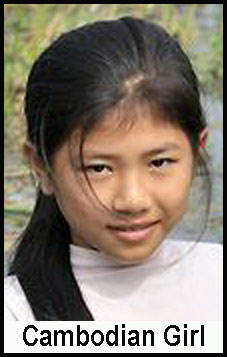
Is GOMER Cambodia?
The "Armenians called Cappadocia GAMIR" (12:229). We find the KHAMUR mt. in Armenia (2:565, C2) and the town of KEMER (6:749c). Before moving east, apparently GOMER left his mark in SPAIN and ITALY (GOMERA,Canary Island & CAMARINA Sicily -- Strabo 3:59,81; the GAMORI of Syracuse Sicily(26:296d); CAMARIUM Umbria -- Strabo 2:369; GOMERO -- Strabo 3:301;). Russian Alexandropol is also known as GUMRI (1:576). In the Caucasus we find the GIMARAI-KHORH mt. (23:874, II D2). A town in E. Turkey is GUMURDJINA (12:717a) and a river is KUMUR SU (9:894d). "GOMER" gave his name to the "Cimmerians" of Anatolia or "Cimbri" of the classics. Therefore, Herodotus, Plutarch and others identify him with the district of Cimmeria (Herodotus 4:12), north of the Black Sea -- called "CRIMEA" today -- but later Cimmerians were SHEMites (Odyssey 11:12-19), not oriental. Just as Hosea prophesied, SHEMitic Israel would be known by the name "GOMER" (Hos.1:3) -- the CYMRY Welsh and the English county of CUMBERLAND. They received this name from either the Japhetic "Gomer" who was in Europe before them, or from "King Omri" or "Samaria" (Both Israelites and Gomerites were called "Cimmerians.") This is why even Josephus thinks "GOMER" is the GALATIANS or GAULS (1:6:1). "CRIM Tartary" and the Russian city "Eski KRIM "which marks the site of the ancient town of CIMMERIUM" were named after GOMER (A.T. Jones' Empires Of The Bible, p.8). But "GOMER'S" portion was "toward the east" (Jub.9:7). A river in India is the "GAMBHAR" (25:123a) and another is the KUMAR River (3:133c) and a district in India is called KAMARUPTA (15:647a) and KIAMARI town and peninsula also (14:376, B7; 15:673a) and KAMRI pass (19:487, B2). He moved to S.E. ASIA and gave his name to the "KHMER EMPIRE" and people there, specifically CAMBODIA today (2:194 & 17:231; 1974 Encyc. Brit.). We have all heard of the "Khmer Rouge." "The KHMERS from the 9th century to the 15th built a great empire, but much of its territory was lost to its neighbors so that only the small kingdom of CAMBODIA remains today" (17:231, Encyc. Brit. Macro 1974). In Burma is the KHEMARATA state (15:728c). The Cambodians are related to the SIAMESE, BURMESE, and other dark-skinned races of INDONESIA and the PHILIPPINES. Sumatra used to be called KAMARA (17:640a) or CAMAR (17:642). A river and state in Sumatra are called KAMPAR (26:71, B2). In the Philippines we find the GIMARAS island and strait (21:392, D5). In Thailand is KEMARAT (14:498, D4). The KHMERS "were forerunners and part-ancestors of the Siamese" (25:4a). In New Guinea is KAMRAU Bay (19:487, B2). In E. Siberia we find the KHAMAR-DABAN Mts. (3:215), KUMARSK (25:10, H3) and KUMARA villages (1:899d). In N. Manchuria is the KUMARA River (17:553, B-C 1). In Japan is the GAMMORITAKE Mt. (15:156, L6). A branch of GOMER sailed to Madagascar since we find Mohit's Map of 1554 labelling it "G. EL KUMR" (17:641b). The GOMEZ family of Spain and South America may be related.
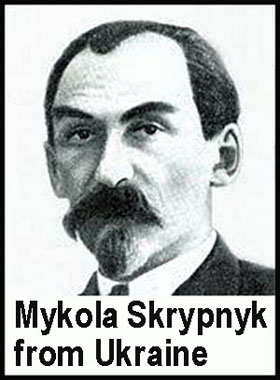
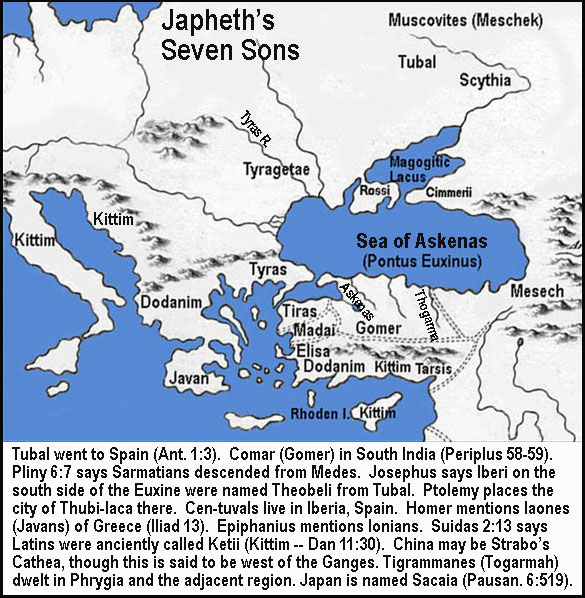
Is ASHKENAZ the Ukraine?
"ASHKENAZ," son of Gomer, is a compound word meaning "race of As," or ASIA. The Talmud also renders the name ASIA (Targum Yonathan; Targum on 1 Ch.1:6; Yerushalmi, Megillah 1:9). ASHKENAZ probably gave his name to ASIA MINOR where we find "ASCANIAN Lake" in inner Phrygia and in maritime Phrygia, surrounded by ASCANIA District -- Strabo 12:4:5. ASKANIAN Bay and also the River ASCANIUS in Bithynia, the Aegean Isle of ASCANIA, the city of Troas called ASCANIA, the ASHAKH MT. (23:874, C3), ASHKALE town (2:565, C1) and ASKANIA island (12:424, G4). (See Homer's Iliad 2:863; 13:793; Strabo 14, p. 681; Pliny H.N. v.38, 40). Jeremiah 51:27 indicates a location in Asia Minor. In Taylor's edition of Calmet's Dictionary it is said that ASHKENAZ is "thought to be the father of the ASCANTES, a people who dwelt about the Tanais (Don), and the Palus Maeotis (Sea of Azov)" -- on the northern shore, therefore, of the EUXINE Sea. The Black Sea was originally called ASHKENAZ Sea, which was mistaken by the Greeks for a word familiar to them, AKSENOS, meaning "inhospitable." Thus it got metamorphosized to AS-CHUNIS, then AXENUS, then EUXINE meaning the "hospitable" sea (A.T. Jones' Empires Of The Bible, p.20 ; Milner's Russia Japhet, p149). Since his father went "toward the east" (Jub.9:7), it makes sense to associate his name with the "ASII" (Strabo's map 12) in the "TASHKENT" (capital of Russian TURKESTAN) and "TASHKURGHAN" areas also. The mountains south of the Caspian Sea were known as the ASCANIMIIAN Mountains (Ammianus Marcellinus -- 350 A.D.) where Strabo calls them SAKI (1:1:10; 1:3:21). They dwelt in Bactriana. Others called the Scyths ASHGUZAI (Akkadian) (Gen. 10 by Wiseman, p.18). A people dwell at the foot of the Ural Mountains who drink cherry juice and call it ASCHY (Herod. 4:23). A town of Russian central Asia is ASKABAD (2:762b) and another is ASKHAP (23:872, H4) as well as mount KASH-KATUR (14:299c), the nomadicTurkish tribe called KASHKAI (27:470a) and the KASHKA-DARYA river (15:683b). Scythians invaded N.W. India and the ACHAKZAI Pathans of N. Baluchistan may be a colony. In Afghanistan is the ASHKUN river (15:631b). In India is the district and river called ASHKUMAN (12:20ac). ASHCHA Lake called Bekturli Lake today east of the Caspian (23:872, H7). A tribe called ASHIHNA (27:470d) lived near Shan-Tan in China. Herodotus mentions oriental SKYTHAI (3:158) which parallels the capitol of ancient Thailand called SUKHOTHAI (Siak). The name "ESKIMO" is a corruption of the Ojibway "ASHKIMEQ" (9:769a). They call themselves "Innuit." Another name for the Shawnee tribe is SACANNAHS (24:814d).
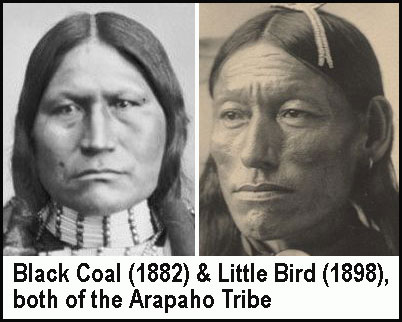
Is RIPHATH in Southeast Asia?
"RIPHATH," son of Gomer, became the RIPHEANS, later called PAPHLAGONIANS (Ant.1:6:1), on the shores of the Black Sea by the "RHEBAS" River in Bithynia (Pliny 6:4) or RIFAS River (see Kesseth HaSofer 113a). They moved north and named the "RHIPAEAN" Mountains (Strabo 7:3:1; Pliny 4:26) called "CARPATHIAN" Mountains today in Romania and Czechoslovakia. However, a number of ancient authorities place the RHIPEAN Mts. in Asia (18:87c; 17:642a; 17:638b-639b). The Bulgaria area used to be called RIPA THRACIA (18:643d). Here they named "EUROPE." As they moved east, they named the Urals "RAFU" or "RAFA HILLS" (Jub.8:10, 14). A branch also moved to the "KARPATHOS" Island in the Aegean from where the "PAPAGO" Indians (S.W. United States) and North American ARAPAHOES came! In BRAZIL we find the "URUPA" and "ARUPAI" Indians (see Acad. Amer. Encyc., art. "Indians" 11:124). The main branch followed father Gomer to S.E. ASIA as the "KHMERS" (GOMER), PAPUANS (PAPHLAGONIANS; Under Papua is the "ARAFURA Sea."), and ARAPESH (RIPHATH) (see Acad. Amer. Encyc. 2:109). In Sumatra we find the RUPAT island (26:71, B2). In the Philippines we find RAPU-RAPU Island (21:392, E4). In N.E. India we find districts named the RIPU and GUMA (8:740d). Also in India are two rivers called RAPTI, the Gandak (14:376, L6) and Gogra (14:376, K6)
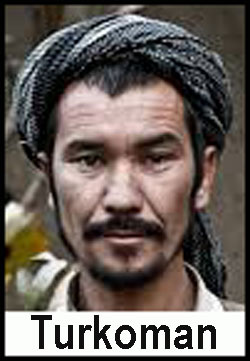
Is TOGARMAH Turkistan?
"TOGARMAH," son of Gomer, migrated to ARMENIA. He even went so far as Spain, naming the TAGUS River there (Ovid's Meta. 2:251). The ARMENIANS trace their ancestry clear back to HAIK, the son of TORGOM (Moses of Khor, I, 4, secs.9-11; see also SDABC, 1:272). "TIGRANOCERTA" was the ancient capital of ARMENIA. Tiglath Pileser (2 Ki. 15:16) who reigned from 745 to 727 B.C. claimed to have subjected "the city of TULGARMI" (Records of the Past 5:48). Ptolemy 5:12 mentions "TIGRANOAMA" in E. Turkey. In the days of Marco Polo, about the middle of the 13th century A.D., there was in Asia Minor a province of TURKOMANIA founded by Seljuks from TURKISTAN. In Georgia we find the name of THARGAMOSIDES (11:758d). The district between Herat and Balkh in Afghanistan was called TOKHARESTAN in the middle of the eighth century A.D. Then he migrated to what are today called the "TAGARMA" mountains in E. TURKESTAN (Enc. Brit. 27:423) and city of TAGARMA in W. China (14:376, F1)(p. 120, Russia Japhet by Milner) and to "TAGARCHI, E. TURKESTAN (28:904). Here we find the TURGASH people (27:471) and TOCHARI tribe (9:881a; 18:620d). TOGARMAH consists mainly of TURKS (in Turkistan), TARTARS (in USSR and China), TRUKHMEN (between the Black and Caspian Seas) and TURCOMANS (between Caspian and Himalayas), UZBEGS , SELJUKS (in the province of Turkomania in Asia Minor) and the KIRGHIZ. The COSSAKS or KASAKS (called Kirghiz by their neighbors) occupy the land between the Ural River and Lake Balkhash. They seem to cluster around the province, town and rivers of TURGAI and the city of TURKESTAN on their southern border. They are also TOGARMAH. But how do we get TURK from TOGARMAH? The Septuagint Greek translates the name "THORGAMA" according to the well-known principle of metathesis where GR following a long vowel becomes RG.
Abul Ghazi, a Khivan historian, quoted at page 376, volume 1 of Schuyler's Turkistan, affirms that the TURKS are so called from TURK the son of JAPHET! The Kirghiz aristocracy (p.139, vol. 2) claim descent from a primitive national hero named TOGAI. But the TURCOMANS, who are evidently the sturdiest, and bravest, and foremost section of the TURK stock, distinctly assert that their forefather was TOGARMAH. At page 316 of his Travels, Dr. Wolff, the Christian Jew, who travelled in Central Asia twice between 1830 and 1845, tells us that the TURCOMANS, through whose territory he penetrated, called themselves sometimes GARAMANS, sometimes plainly Children of TOGARMAH, thus identifying themselves with the people named in Ezekiel 38. Thus TURCOMAN is TOGARMAN. (p.137, Russia Japhet, Milner).
TOGARMAH went to TAGHRAI TANGHI pass (26:1043) and TIGAR (14:376, C6), and TIKAMGARH (20:170a) and TODGARH, all in India (14:376, F7) and the TAGRAK-TSANPO river in Tibet (6:168), TIGU Lake, Tibet (3:847a), TARGUGUAPI mt., Tibet (6:168, D3), the CHOL-TAGH and KURUK-TAGH mts. (6:168, 1E), KUM-TAGH Desert (6:168, E2) and TARGO-GANGRI Lapchung mts., Tibet (26:916, B1). Incidentally, "TIBET" means "Land of the Ark" and Genesis 6:14 uses the noun THBE for the Ark of Noah. Indian legends tell of the land of ARYA-VARTA in N. Kashmir highlands (ARARAT) from where the great Indian lawgiver MANU or NOAH descended. We find the name MESHEKLI on the lower Oxus. TOBLOK between Kashgar and Yarkand. MUJI in the Pamir itself and TERSAGAR the name of a pass at the NW corner of Pamir both remind us of Japheth's sons. On the eastern edge of the central highlands is the mountain, pass, river, and town, all called to this day by the self-same name TAGHARMA. The Bible also locates TOGARMAH "in the uttermost parts of the north" (Amplified B.; Lamsa) or "northernmost" (Jerusale Bible; Ez.38:6) which is SIBERIA where the TUNGUS dwell today. Another name for the Altai mt. is EK-TAGH (1:758b). We find TAGANROG, RUSSIA (Encyc. Brit.26:355), TIGERETSK mts. (1:758), TOGUR town (25:10, D3), TURGAI province (27:420, C2) and TURGINSK town (16:700c) in Russian Asia (Siberia) and the Mongol TORGOD tribe dwells between the Emba and the Or and the Ural Rivers (18:720). The "TAHAGMIUT" Indians of Quebec may be another branch (Acad. Amer. Enc.11:124) and in Quebec we find the OBATOGAMAU Lake (22:724, B2) and in New Guinea we find TAGOTA town (19:487, D3) and TAGULA island (17:53). TOGARMAH became the PHRYGIANS (Ant.1:6:1) or BRIGIANS (Strabo 3:177). In the 9th century, King Joseph of Khazaria wrote: "We have found in the family registers of our fathers that TOGARMA had ten sons, and the names of their offspring are as follows: UIGUR ("Uighurs" of W. CHINA 27:469c;20:359c), DURSU (The language of N.E. CHINA is "Daur."), AVARS (Known as "Avari" peoples of RUSSIAN GEORGIA today.), HUNS ("Huns" of HUNGARY), BASILII (Named the "Basilan Islands," PHILIPPINES where we find TAGAON town [21:392, D4-3]; TAGBAYUG bay [A6], TAGBILARAN city [ DE-6], TAGO town [F6], TAGOLO pt. [D6], TAGOPO mt. [F7], TIGBAWAN town (21:392, D5), TIGAO town (21:392, D5) and TAGULUAN town [E6] and TAGALOGS) TARNIAKH, KHAZAR (KAZAKHSTAN -- 15:774c; Ashkenazi "Jews" came from KHAZARIA.), ZAGORA, BULGARS, (BULGARIA), SABIR (SIBERIA)." (Koester's Thirteenth Tribe, p.64). (See Enc. Brit. index ) "It was from the ... Ugrian Finns that the Magyars came ... who in 889 and onward finally settled in ... Hungary (Ugri, Wengri, Ungri, Ungari, Hungari, Hungary)" (p.260, Bliss Peopling Of The Earth).
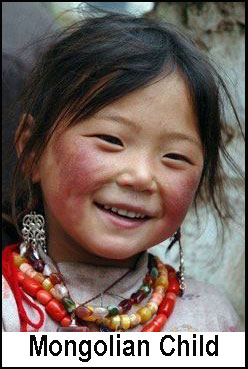
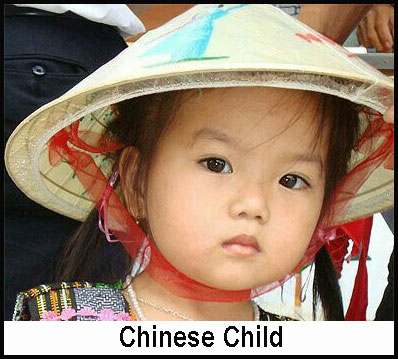
Is MAGOG China & Mongolia?
"MAGOG" means "the land of Gog" (Ez.38:2 & 39:6). In the 14th century B.C. kingdom of GOG in Armenia (Tell Amarna Letters) where we find the MAGARA DAGH MTS. (2:565, C1). Even GYGES of Lydia may have been related. MAGOG moved first to Russia where we find MOGILEV city and District (23:872, D5). MAGYARS are about half the total population of HUNGARY (13:897a). Later MOGOLISTAN is found in the Kashgar and Yarkand area to the east (18:717a), the MUGOJAR Mts. are found by the Aral Sea (27:420, B3-2) and the MOGOL-TAU Mts. (26:303d) at the Syr Darya River. MAGOG lived in SCYTHIA, north of the Black and Caspian Seas to Altai Mountains (Ant.1:6:1; Jerome). Pliny says, "Hierapolis, taken by the SCYTHIANS, was afterward called MAGOG" proving SCYTHIA was MAGOG. In the 26th chapter of Gibbon's Decline and Fall of the Roman Empire, the name MONGOL is written MONGOU without an "L." The word "MONGOL" is actually spelled "MOGOL" or "MOGUL," without an "N." "MONGOL" is simply "MOGHUL" nasalized. In India, for example, MONGOL becomes MOGHUL. But the nasal element represents a second gutteral (as in angel from the Greek aggelos); that is, MNG represents MGG, so MONGOL is MAGOG. The MAGHS race are the main inhabitants of the island of Cheduba off the BURMESE coast (6:21d). MAGHS form nearly the whole population of Arakan, a division of lower BURMA (2:315). Also in Burma is the town of MOGOK (4:840, E3) and the town and river called MOGAUNG (4:840, E2) and MOGADOK Mt. (14:498, A4). Many places in Burma and Thailand have names formed from the syllables MENG, MUNG, MAING, MOUNG or MUANG. In Thailand is BANGKOK. MAGARS live in western NEPAL (19:379c). The MUNCAL tribe of the Malay race. The southern half of China was known in Marco Polo's time as MANJI. MINGNAN, in Shensi Province, China; MINGCHOO in Kwanse; MINGSHAN in Szechuen; These all point to the MING dynasty which governed China at one time.. In the days of Marco Polo there were two governments in China. The northern provinces formed the empire of KHATAI (ruled by KHITTIM) while the southern provinces formed the empire of MANJI (ruled by MAGOG). More recently, the MONGOLS known as MANCHU have ruled China. Their chief town is MUKDEN, their ancient designations, as given in the article in Chambers' Encyclopedia. were MOKO and GEOUGEN. Thus we know that the MANDARINS are MAGOG. They live in MANCHURIA and MONGOLIA. Other tribes of MAGOG are the Tunguses between the North Cape of Asia and the frontier of China and the Buriats who occupy the coun try on either side of Lake Baikal. In western INDIA is the MAGASSI tribe (3:295a). We find the GOGAWA river (15:156, H9) and MOGAMIGAWA River (15:156, L7) in Japan as well as the city of MIACO in Japan. The Persians referred to all the less known barbarous peoples in northeast and northwest Asia, where Russia and MONGOLIA are situated today, as YAJUJ and MAJUJ. See also the Koran 21:96. According to the Ruysch World Map (1508 edition of Ptolemy) both "GOG" and "MAGOG" are found in N. CHINA. Arabs believe the descendants of Gog and Magog inhabit the northern eastern parts of ASIA (Art. "Gog," McClintock and Strong Encyc.). Arab writers referred to the Great Wall of CHINA as the "wall of al MAGOG" (rabbi Aaron Marcus, Kesseth HaSofer p.112a). The 9th century Anglo-Saxon Map of the World places "GOG ET MAGOG" in E. Asia (17:638b). Idrisi's map of 1154 A.D. places "MAJUJ and YAJUJ" in E. Siberia (17:640b). Fra Mauro (1457) places "GIGUA MAG" east of India (17:642b). The Catalan Map of the World (1375) places GOG and MAGOG in NE Asia and the Genoese Map (1457) puts GOG above India and MAGOG in Mongolia (17:643b).
In the Pacific Ocean we find twenty-six islands in the Caroline group named MOGMOG (20:436, D3), MOGGY Island New Zealand (19:624, A7), MUGULA Island, New Guinea (19:487, F3), MOGO and MOGUL NSW (19:538, E1 & E4) and MAGO Islands, Fiji (10:335, C1) and Tonga Arch. (27:4a). MANGKASSAR in Celebes Island, MAIGNIA, a small islet in the China Sea, off the coast of Annam; the MUNCAL tribe of the Malays, said to be of distinctly MONGOL type.; MENANGKABO, a tribal name in Sumatra and Malacca; MANGALA and MANJUTA towns of Sumatra; MANGALLUN in NW Borneo; MANGANAI in the North Island of New Zealand; MANGARIN in Mindoro; MANGDERAI channel off Sunda; MANGONNE, one of the smaller Friendly Isles; three rocks in the Ladrones called MANGS; some small islands near the Philippines are called MEANGIS. MANGGARY near Java. The MAGYARS of Europe, MOGOLLONS of Arizona, MOHEGANS of Boston and the OMAGUA, OMAGUACA and YAGUA Indians of South America (Acad. Amer. Encyc., 11:124) are other branches besides "the inner portions of the north" (Jub.9:7). In New Brunswick we find the MAGAGUADAVIC town, lake and river (Brit., 19:465 (B2)) where the Indians we call "MICMACS" live and in Quebec we find the MAGOG town, lake and river (19:490 (C1)). Also SCUGOG Lake and River in Ontario (16:720a). In Rhode Island we find the YAWGOAG Lake (23:249, A2) and YAWGOO Lake (23:249, B2) perhaps where the "Mohegans" lived. In Argentina we find the YAGAGTOO Lake (20:899d).
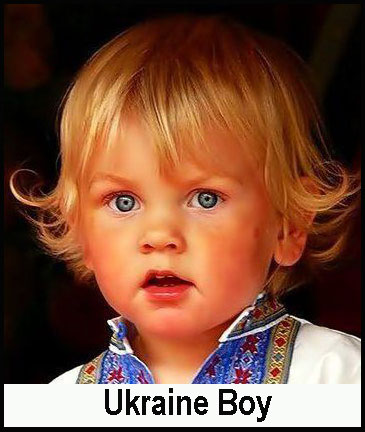
Is MADAI the Ukraine?
"MADAI" became the MEDES (Josephus). One branch went to a "wintry land" (Strabo 7:9). The "MEDI" are "a Thracian tribe bordering on the Illyrian Thunatae" (BULGARIA area) (Strabo 3:265; see Strabo's map 6). Diodorus Siculus, 2:43 says, "Many conquered peoples were removed to other homes, and two of these became very great colonies: the one was composed of Assyrians and was removed to the land between Paphlagonia and Pontus (northern Turkey), and the other was drawn from MEDIA and planted along the Tanais" (Don River in Ukraine area). Herodotus 4:1 says the MEDES were in UPPER ASIA. Herodotus 4:12 says the MEDES were in INNER ASIA if you travel north while keeping west of the Caucasus Mountains (see Her.1:104 also). Herodotus 5:9 mentions that a people who "dress in the MEDIAN fashion" and "claim to be colonists from MEDIA" live "north of Thrace" "beyond the Danube" (ROMANIA, POLAND, UKRAINE). Pliny mentions "the river Don, where the inhabitants are the SARMATAE, said to be descended from the MEDES" (6:6:19) (UKRAINE). Strabo calls them the MATIANI and MEDI (11:8:8). The Sea of Azov was anciently known as MAEOTIS Palus (Strabo 7:4:5). Truly MADAI'S portion was "to the west of his two brothers, unto the islands and unto the coasts of the islands" (Jub.9:8). Herodotus associates them with Meschech and Tubal: "the MATIENIANS ... the Moschi, Tibareni" (3:94).
Medes were also called "ARIANS" (Herodotus 7:62). Strabo's map 12 shows "ARIANA" in the TURKEY, IRAN, PAKISTAN, AFGHANISTAN area where we find the MEDOS (Pulvar) River Persia (20:878b) and MADAN Persia (27:483a) and MODAUNLU Tribe (17:940a), and MADAN tribe of Iraq (3:194a) and MIDIA Turkey (27:426, F2), MIDIAT Armenia (2:565, C3), and MUDANIA Asia Minor (2:760, C2). One branch moved to INDIA and became the "ARIANS" there where we find MADANAPALLI India (14:382, H13) and MADAPUR India (14:382, I10) and the MEDAS tribe (7:91c) while We find MIDIA Cape Rumania (23:826, D2), MEDYN Russia (23:872, E5), MEDIASCH Hungary (3:4, I3) and MADEN Germany (11:830c) and MEDA River W. Austria (2:960, C3). But the "MAIDU" Indians went to CALIFORNIA and the "SHOSHONE" Indians (from Shushan, capitol of MEDO-Persia) to the U.S. In Isaiah 13:17-20 God "will stir up the MEDES against them ... And Babylon (Europe) ... shall be as when God overthrew Sodom and Gomorrah." "Go up, O Elam; besiege, O MEDIA ... Babylon is fallen (539 B.C.), is fallen (end-time)" (Isa.21:2,9).
The danger of Hebrew and Japhetic intermarriage is very real in our modern society. Ukrainians look similar enough. Ukrainian brides looking for a way to escape their poverty advertise to Americans that they are "single." Both look Caucasian and white-skinned even though the Ukraine is primarily from the Japhetic branch and the United States is a SHEMITIC branch. Many Ukrainians now live in the United States. No ministers are shouting a warning or educating their young people. "Thou shalt not let thy cattle gender (breed) with a DIVERSE KIND: thou shalt not sow thy field with TWO KINDS of SEED" (Lev. 19:19) -- let alone yourselves or your children. The heredity is not compatible. It mongrelizes any purebred SHEMITE heredity. Who knows if birth defects and mental retardation in the children of such unions might be one reason God forbade this inter-racial marriage? Israelite men and women who would be horrified at marrying a BLACK man or woman of HAM, are caught unaware by the WHITE-skinned Ukrainian, whose only identifying feature is usually a slight oriental appearance in the eyes or an eastern European ancestry.
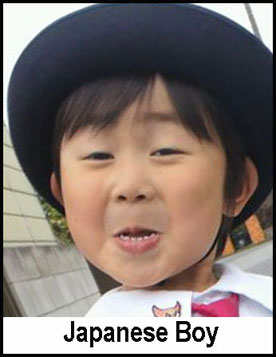
Is JAVAN Japan?
"JAVAN" is found in Assyrian relics as "YAVNAN" or "YUNAN" (23:825a) and on the Egyptian monuments as"UOINIM" or "IONIANS" (14:730b). The same Hebrew word is translated "JAVAN" in some Old Testament passages and "GREECE" or "IONIA" in others. Southern Italy was anciently called MAGNA GRAECIA (p.349, Lemp.) Greek traditions call Japheth the founder of the Greek world. Amarna Tablets mention "YIVANA" as being in the land of TYRE and yet a large branch of JAVAN went east. We hear first of the YAVANAS (Ionians) in India from about 50 B.C. to 319 A.D. (14:399b; 20:277c). Then CHINA'S YUNNAN Province (Funk & Wagnalls, 6:168) and its YUAN dynasty and river (Acad. Am., 20:338), and cities ofYUNNAN, YUNPE and YUN; as well as the YUAN-YUAN Empire all indicate migrations further east. Also called JWEN-JWEN (29:872; 27:470d), we find them in N. China (9:680d). We also find the YUN-HO (Brit. 6:168, K4), YUAN-HU (I2), YUEN-CHIH (H3), YUEN-CHOW FU (H4), YUEN-FU (I4), YUEN-KIANG (G5), YUEN River (I4), YUEN-MOU (G4), YUENNGAN (I3), YUEN-SHAN (K4), YUN (F5), YUNA (F3), YUN-LIEN (G4), YUN-LUNG (F4), YAWNG river (15:728d) ("Y" & "I" were predecessors of the modern "J.") JAVAN'S portion was "all the islands" (Jub.9:8) which couples nicely with JAVAN being identified as "isles afar off" (Isa. 66:19) from Jerusalem. The "JAVANESE" live on the island of JAVA in INDONESIA. According to Schoner's First Globe (1515), Borneo is called IAVA MAJOR (17:646a). Behaim's Globe (1492) also labels Borneo JAVA MAJOR (17:644a). TAIWAN is a corruption of "JAVAN," and by changing the "V" to "B" and then to "P" we get JAPAN! (A common practice. For instance a horse is called "caballo" in Spanish and "cheval" in French. "Apricot" in English is "Abricot" in French. "The letters B, P, and F, are perpetually interchanged ... from one language to another" [p.2, English Derived From Hebrew].) The Genoese Map of 1457 shows a large island in the Pacific called "IAVE" (17:643b). A city in Kiushiu Japan is YANAGAWA (15:156, G10) and a health spa resort called YUNOSHIMA (15:161a) and a town called YUNOKAWA (28:920c). The "YANA" and "OYANA" Indians of CALIFORNIA and BRAZIL (Acad. Am. 11:124) and MADAGASCAR (since its population came from Indonesia) are all colonies. The IOWA Indians of Kansas and Oklahoma (14:461b) also. YANAN Indians of Oregon (14:456a). The "MILYAS" of MADAGASCAR came from MALAYSIA who came from MILYAS (Lycia, p.381 Lempriere's) by way of the HIMALAYAS (just as Spain is called Hispana). We also find YANA bay and YANA R. in Siberia (25:10, I1), the YUNA river in the West Indies (12:825a), the YANDUA island, Fiji (10:335, 1B) and the YUNASKA island Alaska (1:472, K5). In New Guinea we find the YAPPEN island (19:487, B1) and in the Pacific Ocean the YAP island (20:436, C4) and in Tibet the YAPKAKLIK-davan pass (6:168, E2). The city of YAPAHU in Ceylon 914:382, H16).
"ELISHAH," the son of Javan, corresponds to cuneiform "ALASHIYA" or CYPRUS (Ez.27:7). Homer's Iliad mentions the EILESIAN peoples. The Amarna and Ugaritic Tablets mention the ALASIANS, people apparently from CYPRUS. But Josephus identifies ELISHAH as the "AEOLIANS" (Ant.1:6:1) who lived in "AEOLIS" (part of GREECE) and on LESBOS (Herodotus 1:151). Therefore, LISBON, PORTUGAL was apparently a colony. The land of "ELIS" in SOUTH GREECE (Iliad 2:615), IALYSUS was a town in Rhodes Island and the ancient name of Andros Island was LASSIA. Also LASIA of Lesbos, and the names HELLESPONT, HELLENISTS and HELLAS (Iliad 2:681) are derivatives. The Greeks have a brownish Caucasian complexion with black eyes and hair and short stature (9:851a). Early Greece was Japhetic with its Hellens, Thracians and Ionians but later Greece was Shemitic with its Dorians, Argonauts and Spartans. But Since JAVAN went east to islands (Isa.66:19; Jub.9:8), ELISHAH is probably found in the Pacific Ocean. he may have also become the ALEUT Indians of ALASKA'S archipelago via his son ELISHAH. Along the way we do find the great Tibetan city of LASSA and the LAOS tribes of Burma and Thailand and the LUSHAIS of the Bengal Hill country bordering on Burma and the ALA-SHAN Desert (12:167c) in N. China.
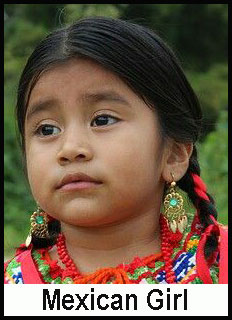

"TARSHISH," the son of Javan, is identified with CILICIA (Josephus), whose capital was TARSUS (26:433c). The Bible shows that a TARSHISH was accessible by ship (1 Ki.10:22; Jonah 1:3) and traded "silver, iron, tin, and lead" (Ez.27:12). "TARSHISH" means "a refinery or smelting plant" (Akkad.) where metals were mined. The TARSHISH of southern and central Spain mined silver, iron, tin and lead (Pliny 4:20). The Britannica mentions a Spanish THARSIS (25:530, B4). According to Herodotus, a place called TARTESSUS is located just outside the Pillars of Heracles (4:152; 1:163) in SPAIN (Strabo's map 3) (called Cadiz today) which has many mineral resources including all four listed above (p.213, vol.24, Funk & Wagnalls). The Nora Stele (9th cen. B.C. Phoen. inscr.) mentions a SARDINIAN Tarshish -- probably the city of THARROS. Ptolemy 3:3 mentions the "THYRSUS" River and "TURRIS LIBISONIS" town in Sardinia. The Britannica mentions THARROS Sardinia (26:727b) and the THYRSUS river (called TIRSO today --15:26, B4). The Spaniards have a brownish Caucasian complexion, black eyes and hair and are shorter than northern Europeans (9:851a). SPAIN also colonized CENTRAL and SOUTH AMERICA. King David prophesied that God "breakest the ships of TARSHISH with an east wind" (Ps.48:7). This is exactly how the SPANISH Armada was defeated when it attacked Britain.
The Tarshish of Jonah and the Tarshish of Solomon were evidently TWO DIFFERENT colonies. Jonah reached his from a port called Joppa on the Mediterranean (Jonah 1:3) while Solomon's navy reached theirs from Ezion-geber on the Red Sea gulf of the Indian Ocean (1 Ki. 10:22). As 2 Chr. 9:21 says, "The king's ships went to Tarshish with the servants of Hiram: every three years once came the ships of Tarshish, bringing gold and silver, ivory, apes, and peacocks." "The word used for 'ape' koph, is regarded by the best Oriental scholars (Gesenius, Fuerst, Max Muller, etc.) as identical with the Sanscrit and Malabar Kapi" (Bible Atlas, p.36). "But a more definite case is furnished by the peacocks.... The Hebrew name tukkiyim appears to be the very same as the Tamil tokei, or togei, the name by which peacocks are always called on the Malabar coast and in Ceylon. All the evidence that exists on the point seems to prove that the peacock came originally from India." When the Spaniards first met the Japanese, they referred to them as "the Spaniards of Asia" (The Philippine Islands, p.192). "The principle settler in these archipeligoes was THARSIS, son of JAVA, together with his BROTHERS" (ibid. p.38; from Native Races and Their Customs by Colin). "For the Day of the Lord shall be upon everyone that is proud and lofty, and upon everyone that is lifted up; and he shall be brought low. And upon all the ships of Tarshish. And the loftiness of man shall be bowed down" (Isa. 2:12, 16-17). The Emperor of Japan was worshipped as the descendant of the sun god. The Mikado is directly descended from the Mother of Heaven and must be worshipped. He was greeted with two upheld and extended arms with shouts of Banzai ("May you live 10,000 years") (cp. 2 Th. 2:1-5). But he was brought low and the ships of Tarshish -- the Imperial Japanese Navy -- were destroyed by the end of World War 2.
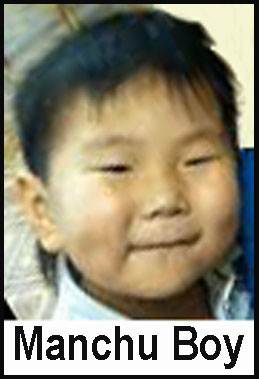
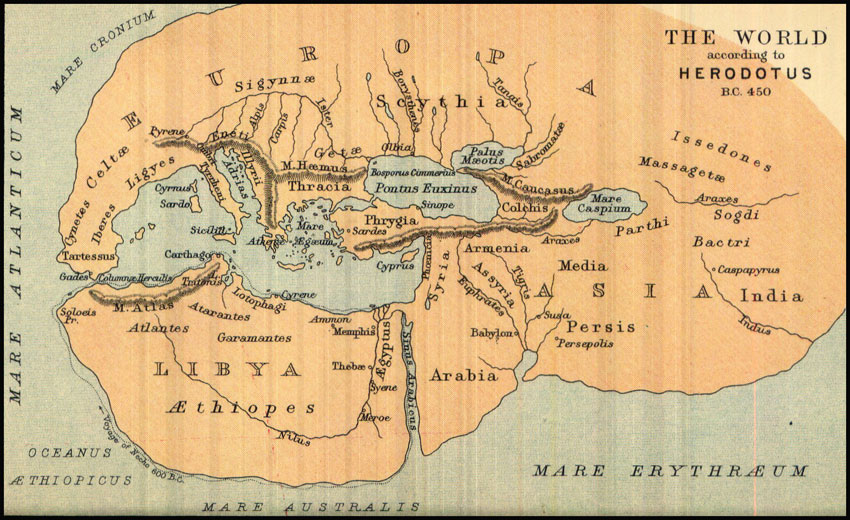
Is Kittim CATHAY?
KITTIM, sons of Javan, are identified with KITION or CETHIUM (Latin"Citium," modern-day Larnaka) on the S.E. coast of CYPRUS (Ant.1:6:1). Here we also find KITI cape Cyprus (7:696) and KITTA Greece (12:424, D4) and KUTI Greece (9:279a) and CYTAEUM in Crete (Rollin's Ancient History) and KITAI Lake Russia (23:874, I B4). 1 Maccabees 1:1,8 and 8:5 identify "KITTIM" as MACEDONIA. Daniel 11:30's "ships of KITTIM" prophecy is translated in the Septuagint as "Romans." It was fulfilled by ROMANS who thwarted Antiochus Epiphanes in Egypt in 169 B.C. In Numbers 24:24 we read that "ships shall come from CHITTIM" which the Latin Vulgate translates as "de Italia." The Chaldee Targum for KITTIM in 1 Chronicles 1:7 reads "Italy" and in Ezekiel 27:6 reads "Apulia" (a southern province of Italy). Sharon Turner's Sacred History of the World says, "KITTIM is considered to represent Italy. A city in Latium was called KETRA. Near Cumae was a river called KETOS. Eusebius says that the Latins sprang from the KITIOI. Suidas, that Telephus, son of Hercules, changed the name of those who were before called KETII into Latini" (vol. 2, p. 490). In East Siberia we find the KITOI alps and river andKUITUN mountains and KITAI tribe of the Siberian Mongolians in the Baikal district (15:828b). In Nepal is KATMANDU. In Tibet is KUTI (19:380c).
KARA KHITAE was the name of Western China in the days of Ghengis Khan. But the name CATHAY, derived from KHITAN or KHITAI which is the name of a Mongol people who ruled China from 907 to 1125, is the ancient name of CHINA (4:204, Acad. Am. Encyc.). Britannica maps show provinces in S. CHINA called "CATHAY" and "KATHAY." In the days of Marco Polo, the thirteenth century A.D. , all China north of the Yang-tsze River was called KATHAY or KHATAI. China today is composed of a dominant Japhetic race (KHITTIM) in Manchuria and the north and a subject Hamitic population (Sinim). In Taiwan is the KOTANSUI river (6:168, L5). In Burma is the KITTHAYIN Island (4:840, F9) and KATHA mt. ((4:840, D2). A branch probably moved to JAPAN since we find KITAMI plain and province (15:156, N4-O5), KOTOMARI town (L-M6), KETOI island and strait (R-S3), KITAHAMA quarter (20:344a), KITAKAMI district (15:156, , M7), KITAKAMIGAWA river (M7), KITSUKI town (G10), KATABIRA town (11:291b), KATSUURA town (I-K10), KOTAKARASHIMA islands (F-G12), KITA-IWO-JIMA island (20:436, D2), KYOTO and KITAKYUSHU cities there. Even the Mikado is called KOTEI (18:437b). In Borneo is the KUTEI river (4:257, C3) and KUTI LAMA lake (4:257b) and KETAPAN town (B3). On the west coast of British Columbia is the city and mountains of KITTIMAT. The Wichita Indians call themselves KITIKITISH (28:618).
Numbers 24:24 says, "ships shall come from the coast of Chittim (China) and shall afflict Asshur, and shall afflict Eber." In Daniel 11:30,44 we read that "the ships of Chittim (Cyprus in type; China in antitype) shall come against him (Antiochus Epiphanes in 168 B.C. in type; the Beast in antitype). Therefore he shall be grieved and return, and have indignation against the holy covenant.... But tidings out of the east and out of the north (Russia) shall trouble him: therefore he (the Beast) shall go forth with great fury to destroy.
"DODANIM," the sons of Javan, are "RODANIM" (1 Chr.1:7; LXX), or RHODII (Marcellinus 29:5:22) living on the island of RHODES in the Aegean. Among its colonies were "Phaselis in Lycia, perhaps also Soli in Cilicia, Salapia on the east Italian coast, Gela in Sicily, the Lipari islands, and Rhoda in north-east Spain" (23:258d). A tribe called RHODDANI lived in the Euxine cradleland (The Europeans by Geipel, p. 40). "DODONIANS" were mentioned as an ancient people (Iliad 2:748; Herod.2:52-57) and the Targum renders it "DARDANIA," a city on the "DARDANELLES," after which the strait was named (cf. Herod.1:189; 7:43; Iliad 2:819). A mountain range in southern BULGARIA is called the "RHODOPE" Mountains (27:426, C-D2). A region of Thracewas known as RHODOPA (Marcellinus 22:8:4)Ptolemy 5:2 mentions "RHODIAN SEA." In Asia Minor we find RHODIAPOLIS (17:152a) and the RHODIUS River (7:829c). In Albania is the RODONI Cape (27:426, A2) and the town of DODONA in Epirus. Pliny mentions the "RHODE" River flowing into the Black Sea from the north between the Dniester and Dnieper (4:12:82). The RHOEDIAS River (Pliny 4:10:34) in Macedonia. "DODONA" was also a city in EPEIRUS (Strabo map 7; 12:440, B1) and an ancient district in Greece was DODONAEA (Hellopia) 8:372c) and RHODES had colonies in SPAIN, called "RHODUS" (Strabo 3:4:8; 14:2:10) and in ITALY, called "PARTHENOPE" and "ELPIAE" and around the SYBARIS River; and in the BALEARIC ISLANDS (14:2:10). RHODIGIUM Italy also (23:782a). The DODECANESE (a group of islands in the Aegean). and the mouth of the RHONE River (anciently called the "RHODANUS" -- p.386, Rawlinson's; Strabo's map 1 shows the river "RHODANUS.") and GENOA or LIGURIA where the LIGURIANS live are all colonies (S.E. FRANCE & N.W. ITALY; see p.16 of Apartian's France In Prophecy). The Ligurian race "prevails everywhere south of the Pyrenees, along the southern coast of France, and in southern Italy, including Sicily and Sardinia," and which extends beyond the confines of Europe into Africa (9:919b). These "Celts" have a small waisteline, slightly swarthy skin, black hair, black eyes, short and small head and are sometimes called "Liguses." The "RHEDONES" moved to central France (Pliny 4:19:108) calling themselves "GAULS" and to BELGIUM as the WALLOONS (German form of "Gaul") and to N. SPAIN. Belgium is 40% Walloon (Dodanim) and 60% Fleming. The Flemings are Nordic. The Gauls, Walloons, many northern Spanish and northern Italians descend from DODANIM. Central French are DODANIM Alpines (55% of France). Northern French are Nordics (20-25%). Those in the NE are German. Southern French are Canaanite (20%). The majority in French Quebec is Alpine rather than Nordic. It is therefore DODANIM. The RHEDONES also lived in the peninsula of Brittany (2:578b). Ptolemy mentions a "RHODE town" in Spain (2:5) and in France "on the banks of the river LIGER (called "Loire" today) are the RHEDONES, whose town is Condate (2:7). In N. France is the RHONELLE River (27:846c) and in S. France is the RHONEL River (6:499a). The "RHINE" River may have gotten its name from RHODANIM also. "In 1802 (Napoleon) Bonaparte declared Valais (a canton in S. Switzerland) an independent state under the name of the "RHODANIC Republic" (27:840). In Switzerland we find the AUSSER-RHODEN district (26:242, G2) and INNER RHODEN district (26:242, G2). The Tavignano River in Corsica was anciently called the RHOTANUS (29:664). In Russian St. Petersburg is a town called RUDNITSA (23:872, C8); in Russian Podolia another town called RUDNITSA (23:874, B2); in Poland the town of RUDNIK (3:4, H1). In Serbia are the RUDNIK MTS. (3:681d) and RUDNIK COUNTY (24:686, B1). QUEBEC is also largely DODANIM. The name "Franks" means "Free" and comes from the "Phrygians" of Turkey which also means "Freemen." The Greeks called the Franks "Fraggoi." The Greeks today would pronounce this word "Franci" since they put an "n" before a double "g."
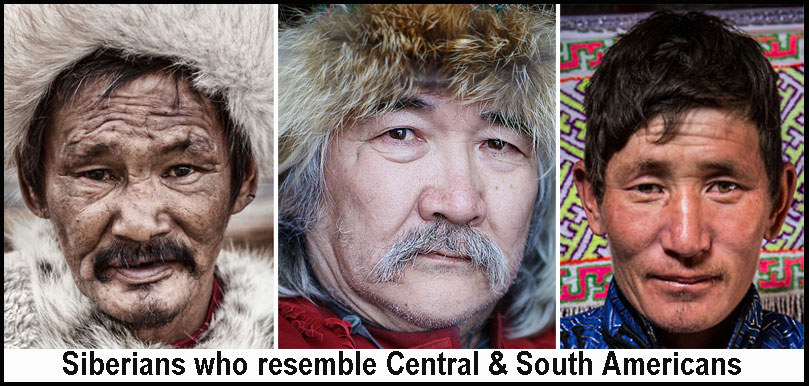
Is TUBAL Siberia?
TUBAL originally dwelt in SUBARTU or SUBARIA in eastern Anatolia (Asia Minor). Assyrian records mention the TUPLAI and Herodotus calls them TIBARENI of Pontus and links them to the Moschi (3:94 & 7:78 see 24:798b). Grammarians tell us that "L" is frequently interchangeable with "R." In addition, "T" is often interchanged with "S" (as in Chaldee, compare also in Greek the interchange of tt and ss.) Thus, SIBERIA and IBERIA are derived from TUBAL. These peoples moved north, west and east! Assyrian monuments associate the "TABALI" or "TIBARENI" with a city in RUSSIA called TOBOLSK, near the TOBOL River (26:1042d; 28:195) in SIBERIA . TUBAL gave his name to the VOLGA River, as is seen by one of its branches, the "AKHTUBA" (Encyc.Brit.11th 28:194). The town called "BULGHAR" is on the east bank of the VOLGA (p.9 Koestler's The Thirteenth Tribe). The village of BULGOJARY is across the VOLGA from the mouth of the Kama. On the same side of the VOLGA, a little lower down, is the village of BOLGARY. BULGAR is an "extensive district in Tartary, lying to the eastward of the VOLGA, and now inhabited by the Bashkirs, sometimes distinguished from the BULGARIA on the Danube, by the appellation of the Greater BULGARIA" (Marco Polo's Travels, p.4). All historians are agreed that the BULGARIA on the VOLGA in Asia came first and the later BULGARIA on the Danube in Europe got its name and settlers from greater BULGARIA. The TOPLITZA River is found in European BULGARIA.
Today European BULGARIA contains Shemites as well as sons of TUBAL. The BALKANS (originally called Hoemus) and BALTIC both take their names from TUBAL. TUBAL took his name from TUBAL-CAIN, whose name was shortened to VULCAN, and is almost identical to BALKAN or VOLGA or BULGA. A nomadic tribe called VOGULS is "found on both sides of the Urals" (10:388d) who named the VOGULKA river (23:872, I3) and VOGULIAN Ural mts. (21:174c) both in Russia. We find the VULKAN mts. in Transylvania (27:212b), the VULKAN pass in Hungary and Rumania (23:826, A2), VOLCHANSK Russia (23:874, F1), VOL river Russia (2w3:872, H3) and VOLCHYA river Russia (23:874, F2-3). Allied to the VOGULS are the Ostiaks -- a similar tribe who inhabit TOBOLSK (10:388d).
A western branch of TUBAL lived in IBERIA (Ant.1:6:1). The SPANISH (Iberians) call themselves "CENTUVALS" or "people of TUVAL." In Portugal we find the town and Bay of SETUBAL (25:530, A3). (Also, between the Garonne and Rhone lived the "VOLCAE" (Liv.21:26; Brit.28:178c) and the VOLCEIANI lived in S. Italy (28:192c)). The TIBER River in Rome and a city in Rome's neighborhood called TIBUR (today called TIVOLI) were both named after TUBAL. The quarter of Rome lying across the TIBER is now called the Trans-TEVERENE. But TUBAL doesn't live in these areas today, except perhaps for the Basques, since the "Western Iberians" (in Spain) moved "to the regions beyond the Pontus and Colchis" (Strabo 1:3:21 & map 11) where we find the TEBULOS-MTA Mt. in the Caucasus (23:874, 11, D2) and called this second area "IBERIA" (short for "Siberia"?) also. Here we find TBILISI or TIFLIS in Georgia and BALFRUSH, a city near the Caspian Sea on the south, and TABRIZ in NW Persia. In the eighth century A.D. TABERISTAN was the name for all the Caspian provinces of Persia. Here ancient atlases place the TAPYRI. East of this, but still near the Caspian, is the TAPAL Range of mountains. There is also a BALKAN Hills and BALKAN Bay on the East Caspian shore. Lake Bataton BALTA in the north. On the banks of the TUBA River is the TUBALAI tribe. In the mountains of Herat ancient atlases again locate a tribe called TAPURI. If we travel down the Amu Darya River to the Aral Sea in Asia we find more settlements of TUBAL. Marco Polo called one district 300 miles down this river BALASHAN (called today Badakshan). About 150 miles further down is the TUPALIK tributary. Nearly opposite on the left are the town and river of BALKH and 100 miles from another town further down the river called Meshekli is a settlement called TABALICK. Lake BALKASH to the northeast of the Aral Sea and in the extreme north up the TOBOL River we find the city of TOBOLSK and nearby the ruins of SIBIR.
Minor colonies of TUBAL became the CANADIAN OTTAWA Indians, the Pacific Island nation of TUVALU," TABLAS Island, Philippines (21:392, D4) and in the Malay Archipelago we find TOBALAI, TUBA, and TAWALI islands (17:466, F3; 473, A3). TABLE bay New Guinea (19:487, F3) and TABLE island in the Andamans (4:840, B6) and the "IPURINA" (Iberian) Indians (Acad. Am. Enc., 11:132) of SOUTH AMERICA. TUBAL'S portion was "between the tongue ... toward the side of the portion of Lud (LYDIA in W. Asia Minor, so probably the Black Sea tongue) to the second tongue (Caspian Sea?), unto beyond the second tongue into the third tongue" (Aral Sea?) (Jubilees 9:9) later to move further eastward. He may have named TIBET also.
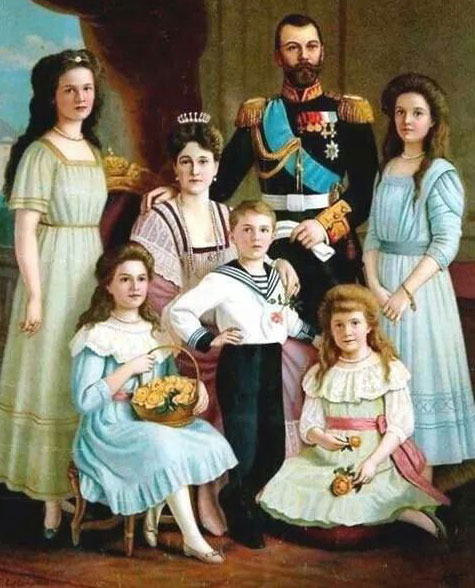
Russian Royalty Came From BENJAMIN
BENJAMIN migrated north and became known as DACIANS and settled in Scandinavia (Eusebius H.E. 3:5:2). Josephus compares the strict manners of life of the DACAE with the Essenes (Ant.18:1:5). BENJAMIN had a son called "ROSH" (Gen.46:21) or "ROXALANI", "the most northerly of them all" (Strabo 3:223) who is BELARUS (White RUSSIANS). All the RUSSIAN royal family of the House of Rurik in the early chronicles have pure Scandinavian names. RUSSIA (Rosh -- Gen. 46:21) is linked to Tubal and Meshech in Ezekiel 38:2, RV. RUSSIA "is certainly derived, through ROSSIYA, from Slavonic RUS or ROS ... a name first given to the SCANDINAVIANS (Benjamites -- Gen.46:21) who founded a principality on the Dnieper in the ninth century; and afterwards extended to the collection of RUSSIAN states" (Encyc. Brit. 11th, 23:869). They named ROSTOV Lake (23:755b) and town (23:872, E6), ROSSIENY (23:872, B4) and ROSINSK towns (23:872, I3). Other viking colonies went to NORWAY and ICELAND "devouring prey" (Gen.49:27). In Norway is ROS River (19:800, C2). "Nestor, an old monkish chronicler of Kiev, relates that in the middle of the 9th century the Slav and Finnish tribes inhabiting the forest region around Lake Ilmen, between Lake Ladoga and the upper waters of the Dnieper, paid tribute to military adventurers from the land of RUS, which is commonly supposed to have been a part of SWEDEN.
In the year 859 these tribes expelled the Northmen, but finding that they quarrelled among themselves, they invited them, three years later, to return. Our land, said the deputation sent to RUS for this purpose, is great and fertile, but there is no order in it; come and reign and rule over us. Three brothers, princes of RUS, called respectively Rurik, Sineus and Truvor, accepted the invitation and founded a dynasty, from which many of the RUSSIAN princes of the present day claim descent. Who were those warlike men of RUS who are universally recognized as the founders of the Russian Empire? ...there can be little doubt that the men of RUS, or Variags, as they were sometimes called, were simply the hardy NORSEMEN or NORMANS" (23:891-892). According to The Origin of the Ancient Russ by Dr. Vilhelm Thomsen, p. 47, an Italian, Liudprand, Bishop of Cremona in 963, writes: "There is a people living in the north, whom the Greeks call RUSIANS, while from the situation of their native place we call them NORTHMEN" (Scandinavians). Prophesied to be "prince" over Meshech and Tubal (Ez.38:1-16,39) in 587 B.C., the fulfillment came in 859 A.D. Ezekiel accurately described the Russian Empire long before it existed. In Byzantine and Arabian accounts of the tenth century, the Swedish Vikings are called "RUS," and Sweden today is called "RUOTSI" by the Finns; in Byzantine and Arabian accounts of the tenth century, the Russians are called RHOS in Greek, the same exact name as the LXX uses in Ezekiel 38:2-3. William the Conqueror is said to descend from the Varangians who founded Kiev.
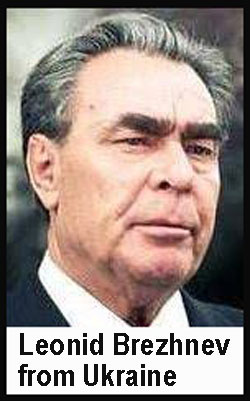
Is MESHECH Russia?
MESHECH dwelt between the Cyrus and Phasis Rivers (Caucasus area) in the time of Strabo (11:2:14-16) and the people were known as "MOSCHI" with their capital Har-MOZACA (See Herodotus 3:94 & 7:78). In Assyrian inscriptions they were known as MUSKAI. Also, the MOSCHENI of Cappadocia (ancient MESHECH in central Turkey -- Ant.1:6:1 & Herod.1:72) built a metropolis called MAZACA and we find a MUSSEKI District in Turkey (27:426, A3). The MOSCHIAN Mountains connected the Caucasus and Anti-Taurus Mountains. Today the capital of RUSSIA is MOSCOW from the MOSKVA River on which it stands. The American People's Encyclopedia says, "According to medieval legend, the original settlement on this site was made by Mosokh [Meshech], grandson of Noah of the great flood fame, and his wife Kva, and a combination of their names gave the first village its name." (art. "Moscow") Anciently, RUSSIA itself was known by the name "MUSKOVI" (see Ez.38:2 also). According to Milner's Russia Japhet, p.85, it had a "MOSKVA" River, NOVO MOSKOWSK on a tributary of the Dnieper in South Russia. MUSKO is an island of the Baltic near Stockholm. MOSCHAISK, on the Moskva, near Borodino. MOSCHOK, half-way between Moscow and Nijni Novgorod. MOSCHARKI, on a tributary of the Volga, near the city of Kazan. MISCHETSKI, between Moscow and Tula. MISCHIRITSCHI on the Muscovite border of the Ukraine. MASCHKOWO, near Tula, south of Moscow. MESCHA, one of the head streams of the Dwina, west of Moscow. MESCHTSCHOWSK, near Tula, and southwest of Moscow. MESCHTSCHEWSKAIA on the border of Ukraine. MESCHKUZE near Riga. MECHKA town (23:935a), MESHA river (23:872, G4). Even today the people of eastern Russia are known as MESCHERYAKS (18:177d) and Russian peasants are called MUZHIK. They named the city of MESHCHOVSK (18:177d).
Colonies in the Bay of Bengal are the islands of MASCAL and MOSCOS. In W. Turkestan are the MUSHKETOV mts (27:419c). Also in Hungary we find the MESEK mts. (13:895a) and MECSEK mts. (21:36a) and in Japan a city called MASHIKE (15:156, M5) and a mountain called MASHIKEYAMA (15:156, M5) and MUSHIR strait (15:156, S2). The "MUSKOGEE" (S.E. U.S.1:811d), "MESCALERO" (Apache -- 19:520E4) (Texas & N. Mexico), the "Slave" Indians who live in the MUSKWA Mts. of British Columbia, "MOSQUITO" (Nicaragua), "MOCHICA" (Ecuador), "MACUSI" (Guyana), and "MOCOVI" Indians (Argentina) may be other colonies of MESHECH besides "beyond the third tongue (Aral Sea?), until it approaches to the east of Gadir (Gedrosa or Pakistan?)" (Jub.9:10). This colony later migrated northwest to MOSCOW. Psalm 120:2-5 says, "Deliver my soul, O Eternal, from lying lips ... Woe is me, that I sojourn in MESHECH ...My soul hath long dwelt with him that hateth peace.... they are for war." These may be racial characteristics of MESHECH.
.jpg)
Is TIRAS the American Indians?
The THRACIANS (Ant.1:6:1) and original ETRUSCANS (of Italy) came from the TAURUS Mountains in Turkey where we first find the descendants of TIRAS. The "TURSHA", in an Egyptian document of the 13th century B.C., were members of a sea confederacy -- perhaps the piratical TYRSENIANS or TYRESENOI who lived on the Aegean islands. "TARAS, (was) the mythical (sic) founder of TARENTUM" (Encyc. Brit. 2:492b) -- a town of S. Italy in Magna Graecia. Italy's TARENTUM was anciently called TARAS, and the TARUS (Taro) was a river there (p.270, Rawlinson's Ancient History). Also the Celtic tribe of "TRERES in the early period, the GETAE and TRAUSI later, and the Gallic SCORDISCI in Roman days came from TIRAS. These were the 'red' THRACIANS of Greek writers" (26:886b). The ETRUSCANS "differed in race" from all the other inhabitants of Italy (p.283, Rawlinson's Ancient History). However, see the article on "LUD" for later inhabitants. We read that the "TEARUS" River ran through THRACE (Herod.4:89) and also the "TYRAS" River (Dniester -- Strabo 1:2:1) above that.
Herodotus says that a prince named TYRSENUS led a colony from Asia Minor into the NW district of Italy which acquired from him the name TYRSENIA -- Latinized as TYRRHENIA, the modern TUSCANY. These people called themselves RASENNA. Their great lake had the name THRASYMENE. These ETRUSCANS were kindred stock with the tribes of the Altai Mountains in north Central Asia according to investigations by Dr. Isaac Taylor. Most eventually were pushed out of Italy by Shemitic Goths and Lombards.
They migrated to the TIRIS district of Spanish W. Africa (1:320, B2), and in Spain the TOROZOS mts. (25;530, C2) and TARRASA town (25:530, F2) and TARRAGONA province (26:431d) (anciently called TARRACO) and two towns called TARAZONA (25:530, E2 & E3) and TARRACONENSIS province (23:648, B2-3) and TARASCON town in S.E. France (26:416). Then across the Atlantic to TOUROS Brazil (4:440, K3). In Mexico is the city of TERRAZAS (18;318, C1).
THRACIANS inhabited the Mediterranean islands (Jubilees 9:14) or "four great islands in the midst of the sea, which approach to the portion of Ham (Africa)" (Jub.9:11). In fact, many Aegean islands bear names very similar to the names of American Indians: Xiosor Ios Island (SIOUX & XIUS ), Sikinos Island (SIQUIAS of Honduras), Piraeus Island (PIROS or PEIRAIEIS of Chihuahua), Tenos Island (the TENOCHTITLAN Island of Mexican Aztecs), Aquis Island (HAQUIOS of Guatemala), Andros Island (ANDROA of Oregon), Anafe Island (ANAFES of Brazil), Leros Island (LECOS of Brazil), Patmos Island (PATOES of Columbia S.A.), Naxos Island (NAHOAS and NAVAHOS); the Karpathos Island (KARPAZOS or ARAPAHOES of Colorado U.S.A.), etcetera. (See Roots Of The American Indian by Benjamin Rea, pp.36-38). "CREEK" Indians of North America from CRETE or "GREEK" In Minoan CRETE lived bronzed men with dark hair and beardless faces. Minoans also wore tufts of FEATHERS on their heads like INDIANS. For sport they would jump over a bull or TAURUS -- similar to SPANISH bullfights. They built MOUND-like tombs and PAINTED or TATTOOED themselves (Encyc. Brit. 22:159). Similar mounds are found in the Mississippi Valley and Mexico constructed by TATTOOED INDIANS.Branches of TIRAS were the MYSIANS, MAEONES or MEIONES (cp. Strabo 7:3:2 & 12:3:20) who are today in Guatemala and Mexico called MAYAS. The THYNIANS (Strabo 7:3:2) became the modern TINNE Indians of CANADA. The ancient CARIANS (Strabo 13:1:58-59) on the Aegean shore now live in Venezuela and the Caribbean known as CARIB Indians. A branch called AMAZONES in Western Asia Minor (Strabo 12:3:21) now lives on the banks of the South American River. Another tribe obviously from ancient TIRAS is the TARASCOS living in Michoacan, Mexico (See Roots Of The American Indian by Benjamin Rea, pp.38-39 or Brit. 18:323a.) Even "ARGENTINA" may take its name from the "ARGENNUM promontory on the Icarian sea" The PICTS of Scotland TATTOOED themselves, made TOTEM poles and practiced MATERNAL succession. In Scotland we find THURSO bay, river and town (24:412, E1), and THARSUINN mt. (24:412, D2) and the TARRAS river (8:663b). They moved to North America as the IROQUOIS who did the same things. The PICTS came to Scotland from THRACE (The Problem of the Picts, p. 132, by Wainwright).
(Ptol.5:2). BRASILEIA" was recognized as the capital of Atlantis by Piteas, Diodorus of Sicily, and others. This became the South American country of BRAZIL. The TUSCARORA Indians of the U.S. Atlantic coast area are from the ETRUSCAN province of TUSCANY. The AZTEC and HUASTEC Indians may be from ASTACUS (Strabo 12:4:2). The nation of PERU may have taken its name from the Greek province of EPEIRUS (Strabo's map 7) or from the Etruscan city-state of PERUGIA (Acad. Am. 7:258).
Another branch of TIRAS became the TERSKI Lapps (16:204b).
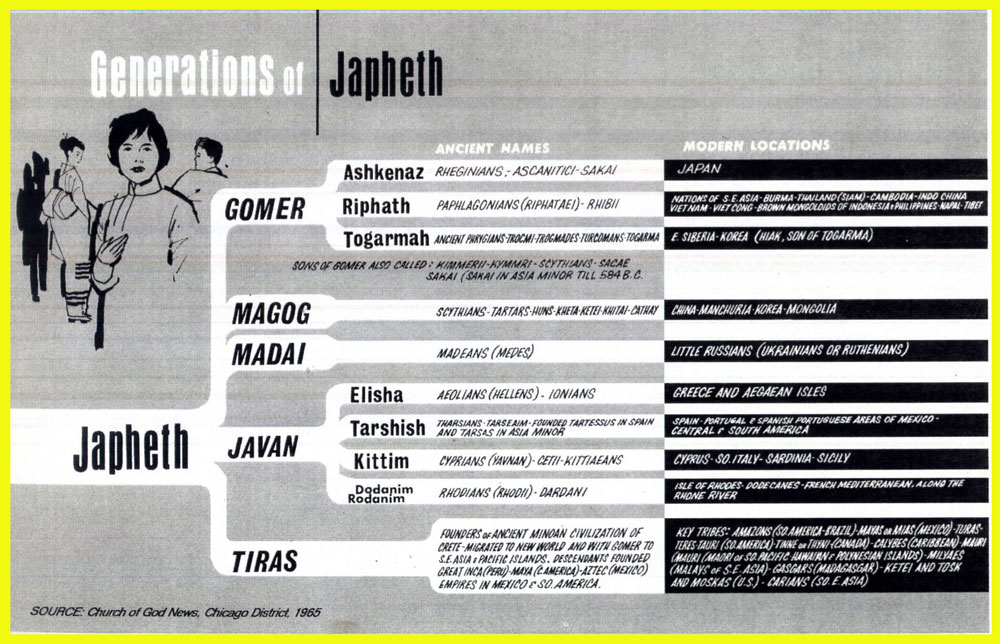
In summary, we see that JAPHETH inhabited "the mountains Taurus and Amanus" (eastern Turkey) and "proceeded along Asia, as far as the river Tanais (Don), and along Europe to Cadiz (Spain)" (Ant.1:6:1). Apparently JAPHETH'S white children populated southern and eastern Europe while his oriental children populated Asia. Japheth's descendants were the first into Europe but the Shemites later pushed them out. For this reason many Bible scholars believe Caucasians are Japhetic. They are not. Ashkenaz first migrated to Germany and Tubal and Togarmah to Spain and Kittim and Tiras to Italy and Javan and Tiras to Greece. But they all later moved east. This is like the Massachusetts Indians first settling the state and then Caucasians coming and taking their name.
We know that the table of nations (Gen.10) was composed some time after the tower of Babel since there were "tongues" (10:5,20,31). Yet it must have been composed over 200 years before Abraham's birth since he was born 352 years after the flood (Gen.11 & 12; Acts 7:4) and Peleg, whose name means "division," was born 131 years after the flood (Gen.10:25). The earth was divided linguistically, socially, geographically and politically 131 years after the flood (10:5,19). One of the border markers was Sodom and another Gomorrah (Gen.10:19), so it must have been before Abraham's time since these cities were destroyed in his day. The locations inferred by the table of nations changed later.
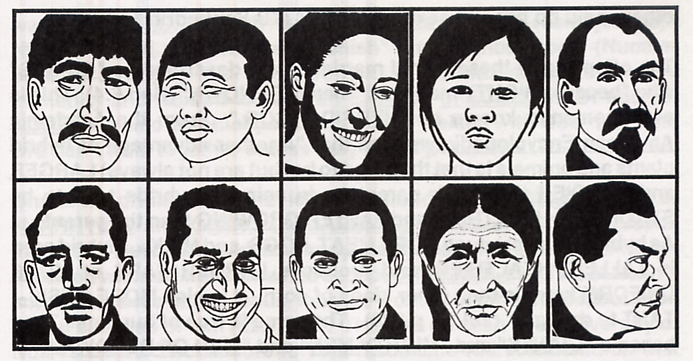
Next Lesson: The Amazing HISTORY of the World's RACES (part three) | Back to Home | Email Us